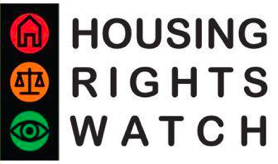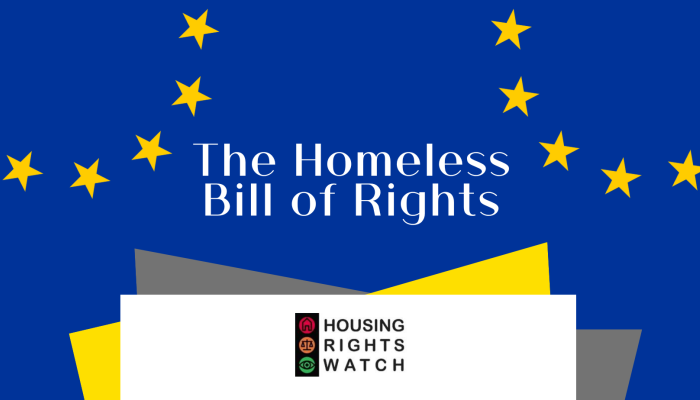On 5 March 2007, the French parliament unanimously adopted a law making the right to housing enforceable. Known as the DALO law, this text obliges the French State to move away from an obligation of diligence towards a performance obligation in ensuring access to housing for all.
Since then, more than 100 000 households have been rehoused as a result of this law. From this perspective, application of the law has been a great success. However in France, the access to housing situation for those who are most disadvantaged remains of grave concern. According to the Foundation Abbé Pierre's most recent annual report, 3.8 million people are suffering from housing exclusion. Implementation of the DALO law has proven to be complex. An evaluation of its application over the last 10 years sheds light on these difficulties. It is now a priority to develop the DALO measures and provisions in order to guarantee improved effectiveness.
How the measure works
The applicant must fulfil four conditions in order to be eligible for DALO: they must be acting in good faith, they must have already taken steps towards finding housing, they must be living in one of 6 predefined situations [1] and their situation must be recognised as urgent.
An application is filled out by the applicant. This is processed by the State authorities before the application is examined by a mediation committee (COMED). There is one COMED per département. It comprises representatives from the State, the département, the communes, the landlords and the associations who accommodate and support those in housing exclusion. It is this committee that makes the decision. In the event of a negative response, it is possible for the applicant to make an appeal to the committee and then to the administrative court. But whatever the situation of the application, the COMED is the sole decision maker.
Households that are eligible for DALO must then be accommodated in social housing. A part of state contingencies and Action Logement [2] contingencies is reserved for these households. The approach then follows the normal procedure for allocating social housing: the CAL (‘housing allocation committee’) of each local authority decides on the housing for the household.
The measure is therefore highly complex.
Geographical divisions
While every département has a COMED, the volume of files processed varies widely. This is a function of the volatile rental market. In most départements where the market is functioning well, the committees are not often called upon. However, in large cities, particularly Marseille, Ile-de-France and areas where the market is tight, the committees are very busy. In these areas, they might meet once per week and deal with 200 files each time.
Implementation difficulties and the necessary reforms
Recent analysis based on the 10 years the measures have been in place has been carried out by the national authorities responsible, namely the HCLPD (‘High Committee on Housing for the Disadvantaged’) and the Carlotti mission created specifically for assessing the law. This analysis shows that even though the DALO has proven effective, difficulties persist and that, in départements where the situation is most difficult, implementation of the law is worsening.
The main points made by the committee are as follows:
- The lack of information on the the measure: while in 2006 an INSEE study revealed that more than 500 000 households were potentially eligible for DALO, only 185 000 were identified as such.
- COMED lacks resources particularly if it has to examine several hundred files per session and yet the majority of its members are acting on a voluntary basis. The service user is not present at the session and the committee members are involved in future outcomes for the file;
- COMEDs are interpreting housing law in an increasingly restrictive manner. This is mainly by judging that the prior search for housing was inadequate and that urgency has not been established.
- More seriously, COMEDs can apply criteria that were not established within the law. This is the case when they take into account the housing supply level in the area. It is also the case when they pre-empt that the local authority will refuse the housing allocation on the grounds that the household situation is too complex to meet the local authority’s own access criteria.
- Access to housing for DALO households is not facilitated. The social housing contingencies that are prioritised for them may not be well known, may be poorly defined or may be put to other uses. Furthermore, the allocation process carried out by CAL has its own set of criteria and the situation of the DALO-eligible household must also meet these criteria.
Stigmatisation of the people concerned
The fact that DALO households can still not be accepted by CAL highlights another unexpected and negative consequence of DALO implementation.
We now speak of ‘DALO households’. In this, we are contributing to the stigmatisation of people. To be ‘DALO’, is to be poor and poorly integrated. It might also mean being a household that is a risk for the landlord in that it is not sufficiently independent and may require social support. Furthermore, although hard to admit, certain households who receive a positive decision may go on to refuse the housing that is allocated to them.
This stigmatisation explains in part why it is so difficult to rehouse DALO-eligible households. In 10 years, 180 000 have been eligible while just over 100 000 have been rehoused.
Association actions
Associations working with those in situations of housing exclusion or homelessness play a vital role in application of the DALO law at various levels.
Associations advise households and support them in filling out their application. They guarantee that the application is correct and can thus be properly examined by the COMED. However, many households do not benefit from this support.
The associations are represented on the COMED – both associations that manage accommodation and temporary housing as well as those supporting people on their path to housing inclusion. The associations ensure that households are represented in the committee meetings and defend the applications by reminding those present of the law and by trying to prevent the COMED from slipping in new criteria not covered by the law.
As they are hugely invested in the implementation of DALO, associations in several départements have created focus groups for knowledge sharing that meet local government representatives in order to analyse the potential shortcomings and to suggest improvements to the measure.
They are also involved at national level and are represented on the different committees that manage DALO. The Collectif des Associations Unies (Collective of associations united for access to housing for those excluded), which brings together 40 leaders of association networks, suggests improvements to the law and to regulatory texts. It has also been involved in election campaigns in order to improve the success of the measure.
The DALO association was specifically created to ensure the success of the law. It is involved in following up on the legal development of the DALO law, in improving communications and in training all COMED members in order to strengthen their understanding of the legislation so that they become an effective stakeholder in addressing people's needs.
After 10 years of implementing the DALO law, progress has undeniably been made. However, continued monitoring is required to ensure its success. The associations are on the case.
[1] Have applied for social housing and be waiting an inordinately long time, be deprived of housing, be hosted in accommodation, be under threat of eviction without being rehoused, be living in unfit housing, be disabled in housing that is overcrowded or not meeting criteria of decency.
[2] Action Logement (‘Housing Action’) is a joint body financed by a tax on salaries and is a major owner of social housing.




